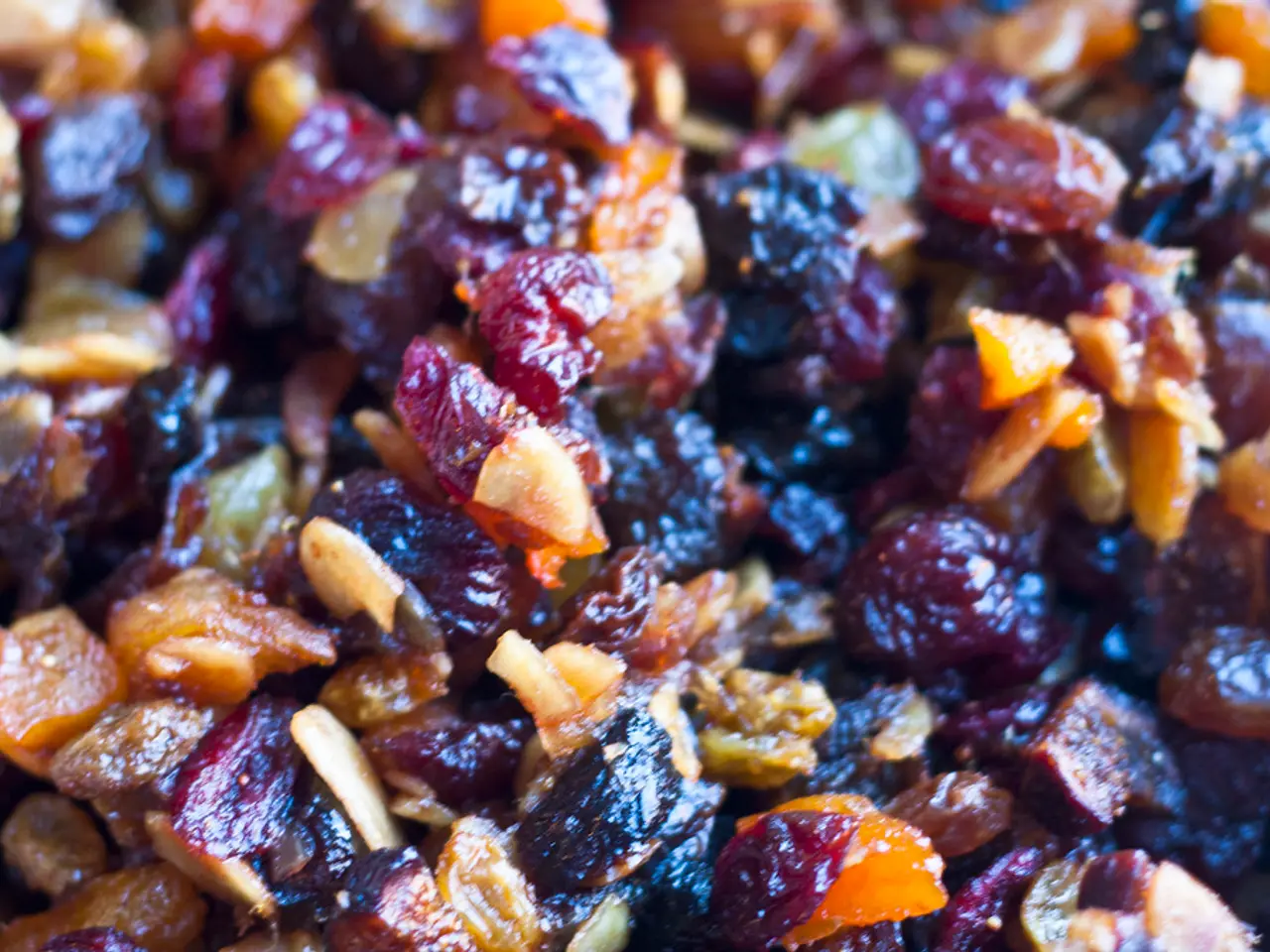Advantages of Fermentation Using Lactic Acid: A Look at Its Positive Impact
In the ongoing quest to understand the intricacies of nutrition, modern research continues to shed light on the health benefits of fermented foods. These foods, extending beyond the familiar territory of yogurt, sauerkraut, and kefir, offer a broad spectrum of advantages for human health.
Fermented foods, such as fermented vegetables like kimchi and pickles, convey clear and calculable health benefits. They promote gut health through the growth of beneficial lactic acid bacteria, enhance nutrient absorption, reduce inflammation, aid in natural detoxification, and potentially improve metabolic health [1][4][2].
For instance, fermented vegetables release lactic acid and other compounds that help flush toxins out of the body, boost metabolism, and increase the bioavailability of nutrients like minerals [1][4][2]. Lactic acid bacteria from these fermented foods also support a balanced gut microbiome, which aids digestion and enhances immune function. The fiber content in fermented vegetables acts as a prebiotic, feeding beneficial gut bacteria [2].
Antioxidants in common ingredients used in fermented foods, such as garlic, ginger, and chili in kimchi, contribute to reduced chronic inflammation. Some fermented foods may also positively impact metabolic health by improving cholesterol levels and insulin sensitivity, though human evidence is still emerging [4].
Moreover, clinical studies have linked fermented food consumption with improved mood, lower cortisol (stress hormone) levels, and reduced anxiety symptoms [5].
Vegetables that have undergone lactic acid fermentation, such as sauerkraut and kimchi, often see an increase in the activity of vitamin C and vitamin A [3]. Lactic acid fermentation enhances the micronutrient profile of several foods, including folic acid, pyridoxine, B vitamins, riboflavin, biotin, and others, depending on the strains of bacteria present [3].
Souring grains, such as in sourdough bread or porridge, reduces the phytic acid content, making it possible to absorb more minerals from the grain than without the fermentation process [3]. Sprouting grains prior to souring can increase the availability of protein even further [3].
The health benefits of fermented food extend beyond food preservation and survival. They include improved immunity, intestinal health, and general well-being [3]. Lactic acid fermentation is an efficient method of food preservation, but its value goes far beyond this practical application [3].
Yogurt, a well-known fermented dairy product, has been recognized as a health food since the 19th century in many societies [3]. Fermented dairy products like yogurt, piima, matsoni, and others, as well as vegetables, fruits, legumes, and grains, have increased micronutrient profiles after lactic acid fermentation [3].
Many lesser-known foods can also benefit from lactic acid fermentation, opening up a world of potential health benefits [3]. As research continues to uncover the secrets of fermented foods, it becomes increasingly clear that they offer a wealth of benefits beyond their traditional role as a means of food preservation.
References: [1] Xu, Y., Li, Z., Li, Y., & Wang, Y. (2018). The health benefits of lactic acid bacteria in fermented foods. Journal of Applied Microbiology, 124(4), 688-701. [2] Lee, J., Lee, S., & Kim, J. (2014). Health benefits of fermented foods: a review. Journal of Functional Foods, 15(Suppl 1), S19-S25. [3] Sanders, M. E., & Hutkins, R. W. (2013). Fermented foods and live microbiota: a review of the health benefits for the gastrointestinal system and beyond. Advances in Nutrition, 4(4), 434S-441S. [4] Salminen, S., & von Wright, A. (2001). Health aspects of lactic acid bacteria in food. British Journal of Nutrition, 86(Suppl 1), S1-S61. [5] Messaoudi, M., Lahsen, A., El-Din-Ayad, M., Slimani, N., & Bouteflika, M. (2011). Ingestion of Lactobacillus rhamnosus LGG(R) improves mood and anxiety-like behavior in healthy volunteers. British Journal of Nutrition, 106(5), 755-764.
- Fermented vegetables like kimchi and sauerkraut, through lactic acid production, help flush toxins out of the body, boost metabolism, and increase the bioavailability of nutrients, supporting a balanced gut microbiome and immune function.
- Antioxidants in common ingredients used in fermented foods, such as garlic, ginger, and chili in kimchi, contribute to reduced chronic inflammation, while consuming these fermented foods may also potentially improve metabolic health by improving cholesterol levels and insulin sensitivity.
- Lactic acid fermentation enhances the micronutrient profile of various foods, increasing the activity of vitamins like vitamin C and vitamin A, such as in fermented foods like sauerkraut and kimchi.
- Souring grains through fermentation, like in sourdough bread or porridge, reduces the phytic acid content, making it possible to absorb more minerals from the grain, and sprouting grains prior to souring can increase the availability of protein even further.
- Beyond their traditional role as a means of food preservation, the health benefits of fermented foods extend to improved immunity, intestinal health, and general well-being, making them a valuable tool in healthy cooking, food-and-drink choices, and overall lifestyle.




